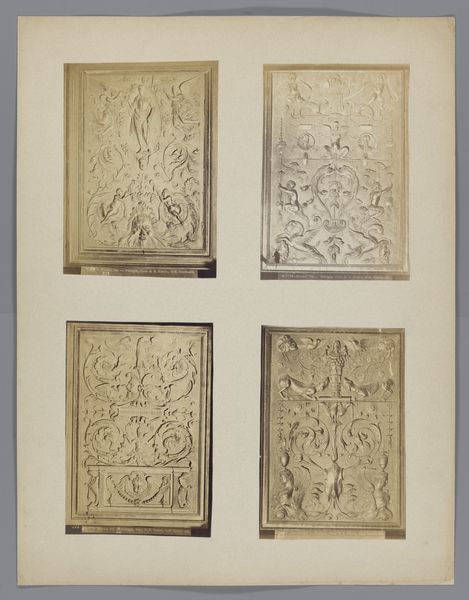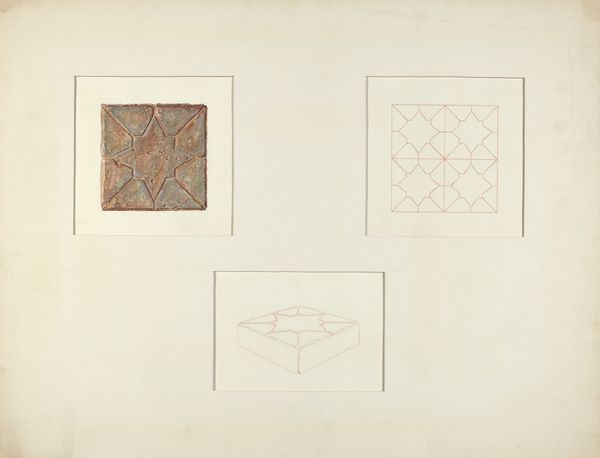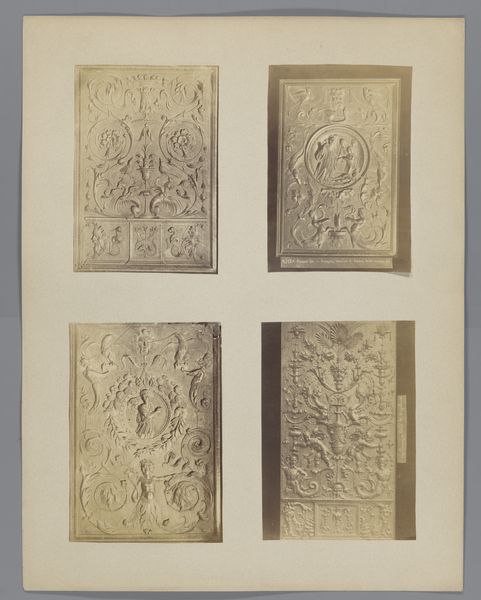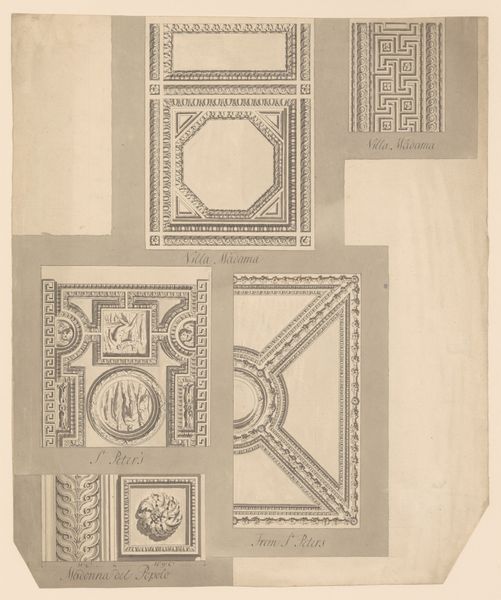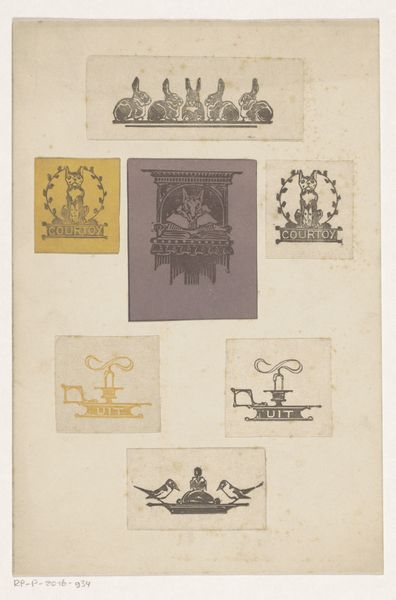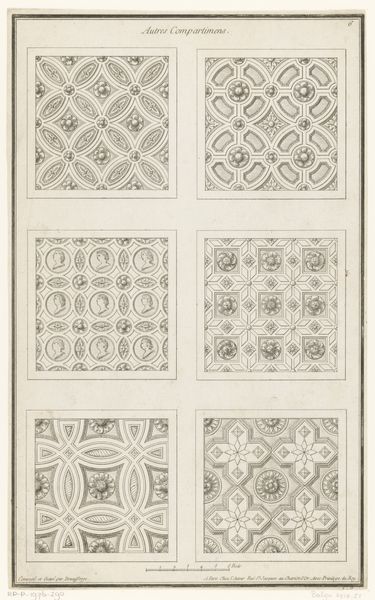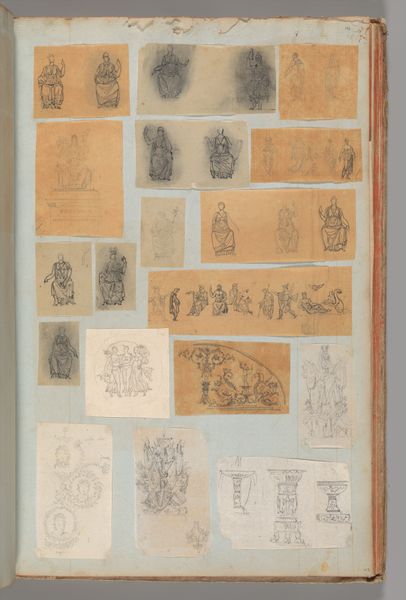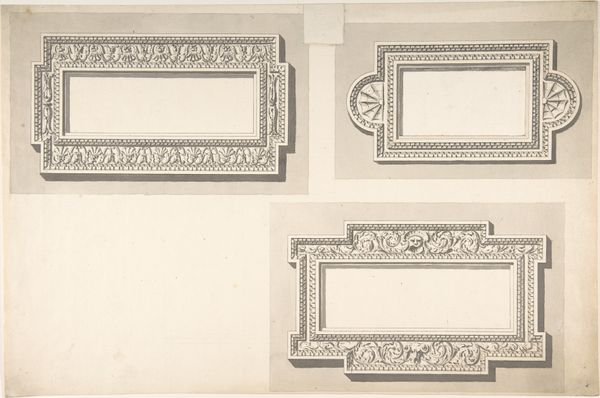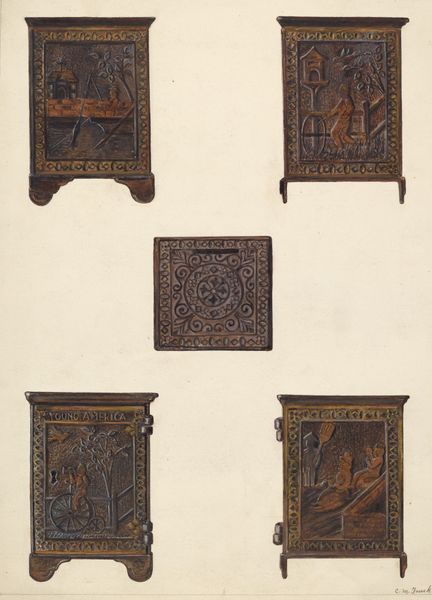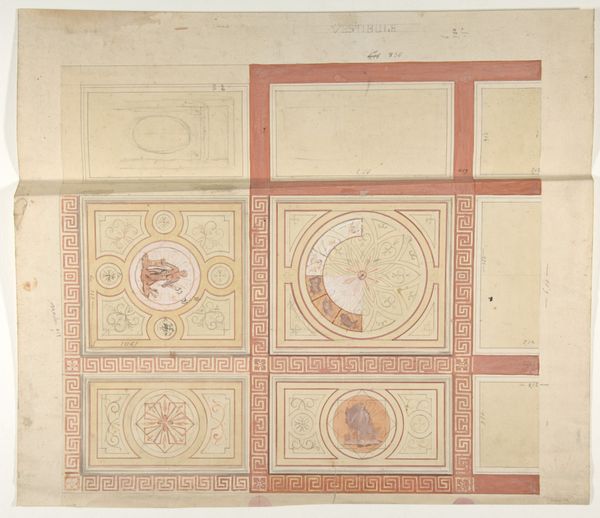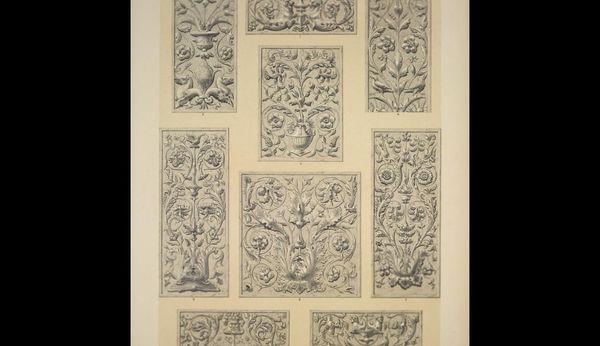
drawing, plein-air, watercolor
#
drawing
#
plein-air
#
watercolor
#
geometric
#
watercolor
#
realism
Dimensions: overall: 64.4 x 45.5 cm (25 3/8 x 17 15/16 in.)
Copyright: National Gallery of Art: CC0 1.0
Editor: Here we have Fritz Boehmer’s "Zoar Door Panels," a watercolor drawing from around 1937. I’m struck by the repetition, yet each panel has a unique texture and color scheme. How do you interpret this work, particularly considering the historical context of the Zoar settlement? Curator: Well, seeing as how the work documents architectural details from the communal Zoar settlement, founded in the early 19th century by German separatists, we should think about the public role of art. This piece preserves visual information about a very specific and isolated community. I wonder how Boehmer was positioning these door panels within the shifting context of 1930's America? Is this an archival impulse or perhaps even something more nostalgic or political, reflecting a certain back-to-the-land ideal, a refuge from modernity perhaps? Editor: So, it's less about the individual panels and more about what Boehmer is saying by documenting and presenting these elements of a community in transition. Curator: Exactly. He isn’t merely copying what’s in front of him, but actively participating in the construction of a historical narrative, defining what and how the legacy of this utopian experiment would look. How do we choose to remember Zoar? And who gets to choose? Those become crucial questions. Editor: I hadn’t considered the selective act of documentation. Does the medium – watercolor – further contribute to that narrative? Curator: Absolutely. Watercolor, often associated with plein-air studies and delicate rendering, evokes a sense of immediacy and intimacy. It suggests a personal encounter with these architectural details, contrasting the grander scale of history with individual perception. It humanizes these pieces of history. Editor: I see it now. I initially focused on the formal qualities, but you've highlighted the art’s role in shaping a community’s image. Thanks! Curator: Indeed. And hopefully, looking closer reveals these layers to a contemporary audience and what happens to that interpretation over time.
Comments
No comments
Be the first to comment and join the conversation on the ultimate creative platform.
